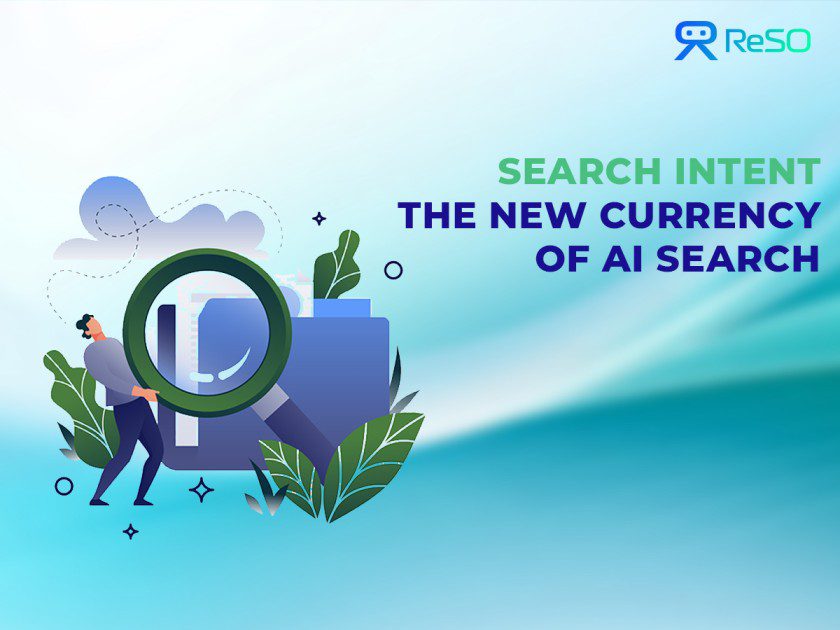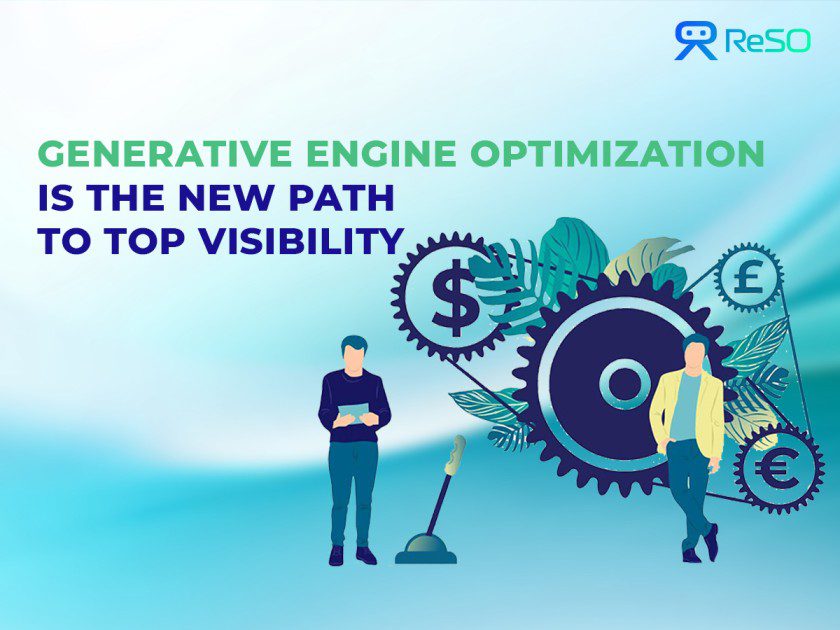
Right now, AI isn’t just making content easier to produce. It’s flooding the internet with it. Anyone can spin up thousands of words in minutes, on any topic, in any style, for any channel. But here’s the thing: more doesn’t mean better. When everyone can create, the stuff that wins is the stuff people can actually understand.
In the age of AI, clarity, not sheer output, is the edge that sets brands apart.
The Content Avalanche Is Here, And It’s Just the Beginning
Look at the numbers: Almost 90% of content marketers are planning to use AI tools in 2025, up from just 65% two years ago. That’s a surge that’s rewriting how teams draft, edit, and publish. It’s not hype, AI is now a daily tool, from the newsroom to the niche SaaS blog.
By July of this year, global site visits to OpenAI’s ChatGPT topped 1.2 billion a month, and generative writing tools are projected to account for a majority of all digital content produced by 2027. The market’s hungry for AI content, but let’s get real: it’s also exhausted by mediocre copy and clumsy “filler” articles itching for a click.
The Human Problem Isn’t Going Away
A reality check: the internet isn’t suffering from a shortage of words. It’s suffering from confusion. And not the kind that typos cause. The kind that comes from sentences that run on for half a screen, or headlines that bury the real point so deep nobody sticks around to find it.
18 years of A/B testing tell a simple story. Copywriting; real, intentional wordcraft, remains the single highest-leverage way to boost conversions on any page. Not design. Not popups. The words themselves still close the sale.
Recent surveys confirm it: for marketers who actually measure, clarity beats cleverness nearly every time. More than 76% of users say they skip a site if the language isn’t plain or the main point isn’t obvious in the first 10 seconds (see stat 15).
Why Clarity Beats Clever
Here’s what really matters:
- Users don’t buy what they don’t get. If someone has to re-read your headline three times just to know what you’re offering, you’ve already lost.
- Most websites hemorrhage money because their copy makes people work way too hard. Even typos and grammar mistakes don’t kill as much business as sentences that make short-term memory tap out.
- Clear beats clever, always. The world’s best ad campaigns? They get right to the point and land with ordinary words.
Take it from Google’s own John Mueller: The search giant has stopped caring whether content was written by a human or a bot. What they want now is quality and clarity, whatever the source.
Why Most AI Content Is “Just Okay,” and That’s a Problem
It’s not enough for content to technically “make sense.” If it’s confusing, if it wanders, if it smothers your core message in jargon, even the sharpest AI in the world can’t save you. Why? Because the knife-edge for performance isn’t whether people find your stuff, it’s whether anyone acts on it.
And here’s the kicker: most copy fails not because it’s wrong, but because it’s fuzzy or overwhelming.
In one study, marketers using AI-generated copy increased traffic by 120% within six months, but only those who applied a strong human editorial hand saw actual conversion rates rise, up to 52% higher over prior baselines. Tools can draft, but people polish. The winners blend the best of both.
Make It Readable, Make It Breathe
Start simple. Even with AI as a writing partner, readability is the superpower that makes content work:
- Short, punchy sentences keep readers tracking.
- Plain verbs move the action fast. Replace “carry out an improvement initiative” with “improve the website,” and you lose nothing, except confusion.
- Resolve ideas quickly. Give answers or next steps early and often.
- Allow for whitespace and structure so eyes and brains aren’t overwhelmed.
- Cut the “Official Style” that sounds sophisticated but loses everyone halfway in. If your writing reads like a legal disclaimer, you’re doing it wrong.
More than anything, clarity in digital copywriting works because it grants your audience an instant path to action. The average reader only spends 47 seconds on a content page. They don’t owe you patience; it’s your job to deliver meaning fast.
The AI/Human Editing Loop: Still Unmatched
Here’s a secret the best marketers know. Even the most advanced AI-generated copy is only as strong as the human who edits it.
- Speak first, then write. Tools like Moz found a 52% lift in conversion just by drafting content with a conversational, “spoken-first” tone (see overview of source).
- Human editors strip away the fluff, smooth awkward AI phrasing, and restore the brand’s real voice. No model, no matter how smart, replaces that last mile of intent.
Think of AI as the ultimate first-draft machine, but keep a ruthless human on the final pass.
There’s Data in Simplicity
Research from Stanford and Salesforce finds 71% of marketers now use AI for at least partial drafting and ideation, but among the highest-performing campaigns, editing time and budget have increased. Why? Because finishing strong, like tightening, testing, and clarifying, makes content work where it matters most: live with your user.
Conversion Loves Clarity
Stats don’t lie: landing pages optimized for clear, concise copy see a 36% higher conversion rate than those drowning in “Official Style” or imprecise messaging.
Even banner ads get a 38% boost in click-through when the copy is rewritten for straightforwardness and speed. The lesson? No matter the channel, if you want action, start with understanding.
The “Passable” Problem
As AI fills the web with okay-enough articles, the real opportunity shifts. It’s not enough to write something that checks the grammar box or passes a spell-check. The work that gets shared, ranked, and acted on is the work that feels obvious moment-to-moment.
Surveys show that the majority of B2B buyers and consumers alike distrust “overly generic” or “dense” writing, associating it with low value and even dishonesty. On the flip side, clear writing creates trust, which translates to business.
So, What Works? Practical Steps for Sharper Content
- Draft your headline last. Don’t lock yourself into a clever phrase early. Reveal your point, then rewrite your title for clarity.
- Use tools, but don’t abdicate taste. AI can generate a structure, but readers can tell when no human cares. Always add some craft.
- Limit paragraph length to four lines max. Short is not childish; it’s read.
- Always provide a “So what?” If you can’t finish with a clear benefit for the reader, keep editing. Every section, every point.
- Test real reactions. A/B test version A versus version B: no matter how experienced you are. Let data tell you what lands.
What About Typos and Grammar?
Sure, mistakes matter. But they matter a lot less than you think, so long as the meaning is clear and the action is obvious. The biggest traffic killers? Vagueness. Over-explanation. Trying to sound “smart” instead of being useful.
Editing Is Not Optional; It’s Profit
It’s truly wild: Content marketers who invest at least 30% of their process in editing and clarity review see average click-through rates and leads nearly double compared to teams who just hit “publish” on the first draft.
So what this really means is your most profitable skill, as AI keeps generating more, is the ability to refine. More words are no longer the bottleneck; making them clear and useful is.
Clarity Is Your Brand’s Real Edge
This is the competitive secret: clarity wins. In a web full of “good enough,” what stands out are the brands that write directly, explain simply, and respect the user’s limited attention.
Do the basics well:
- Plain English, not buzzwords.
- Actions first, then explanations or background.
- Generosity: give answers quickly, trust the reader to want more.
The digital world is getting noisier by the minute. Standing out doesn’t mean shouting louder. It means making sense, with discipline.
Want Your Words to Convert?
Humans still run the show, even in a world obsessed with AI. Writing habits that put clarity ahead of cleverness are not outdated; they’re the best insurance you have for conversion, retention, and loyalty. So try this: before you hit publish, ask yourself, “Would a stranger understand this in eight seconds or less?” If yes, you’re good. If not, contact us. We help you in writing content that shows up in AI search results.








